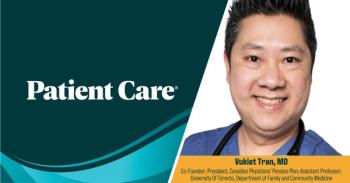
College Athletes at Risk for Exercise-Induced Bronchospasm
COLUMBUS, Ohio -- Nearly 40% of varsity athletes may be susceptible to exercise-induced bronchospasm, researchers here said.
COLUMBUS, Ohio, Sept. 5 -- Nearly 40% of varsity athletes may be susceptible to exercise-induced bronchospasm, researchers here said.
And most of those who tested positive in their study had no history of the condition or of asthma, according to Jonathan Parsons, M.D., of the Ohio State University Medical Center, and colleagues.
The proportions are similar to those seen among Olympic athletes and are much higher than found in the general population, the researchers reported in the September issue of Medicine & Science in Sports & Exercise.
The study of 107 varsity athletes at Ohio State - participants in 22 different sports - used eucapnic voluntary hyperpnea (EVH) testing, which is currently recommended to document the condition among Olympians, but not often used in college athletics.
Based on the tests, the researchers said, 42 of the 107 - or 39% -- had exercise-induced bronchospasm, and 36 of the 42 - or 86% -- had no history of either that condition or asthma.
"Many of the reported severe episodes of asthma provoked by exercise have occurred among competitive athletes under the age of 21," Dr. Parsons said.
"Now that we've demonstrated how common this problem can be," he said, "more research is needed to determine the best way to monitor and manage athletes at the highest risk of developing symptoms while participating in their sports."
Exercise-induced bronchospasm is common among people with asthma, but only about 10% of people who don't have a history of asthma suffer from the condition, Dr. Parsons and colleagues said.
However, studies have shown that up five times as many Olympic athletes are susceptible to such attacks, the researchers said, even if they have no history of asthma.
The International Olympic Committee requires evidence of exercise-induced bronchospasm before it will allow an athlete to use beta-agonists to treat it.
In this study, participants breathed a mixture of dry compressed gas (5% carbon dioxide, 21% oxygen, and 74% nitrogen) at a target rate of 85% of their maximum voluntary ventilation per minute for six minutes.
The test was considered positive for exercise-induced bronchospasm if any of the following occurred:
- A decline of more than 10% in one-second forced expiratory volume
- A decline of more than 5% in forced vital capacity.
- A decline of more than 20% in peak expiratory flow rate.
All of the athletes had normal spirometry at baseline, the researchers found, although 11 had a history of asthma. Only three were on asthma medication and all three tested positive for exercise-induced bronchospasm.
The athletes were stratified depending on whether they took part in high-ventilation sports, such as soccer or lacrosse, or low-ventilation sports, but there was no significant difference in the prevalence of EIB.
There was also no difference in prevalence based on the sex of the athlete, the researchers said.
The presence or absence of symptoms did not predict the results of the test, the researchers said, and men and women were equally likely to have symptoms if they tested positive.
"One important finding of this study is that a history of symptoms with exercise is not enough to make a correct diagnosis," Dr. Parsons said.
"Diagnosis and treatment of exercise-induced asthma based solely upon subjective symptoms could increase the number of inaccurate diagnoses and expose people to unnecessary medications," he said, adding that objective confirmation of suspected exercise-induced asthma "is absolutely critical.
The authors pointed out that their study "is limited by a cross-sectional design and non-random evaluation of athletes from various sports, so the true prevalence in individual sports is unknown."
"In addition," they said, "although we did not find differences in the prevalence of [exercise-induced bronchospasm] between males and females, our sample size for females was relatively small."
Newsletter
Enhance your clinical practice with the Patient Care newsletter, offering the latest evidence-based guidelines, diagnostic insights, and treatment strategies for primary care physicians.

















































































































































































































































































